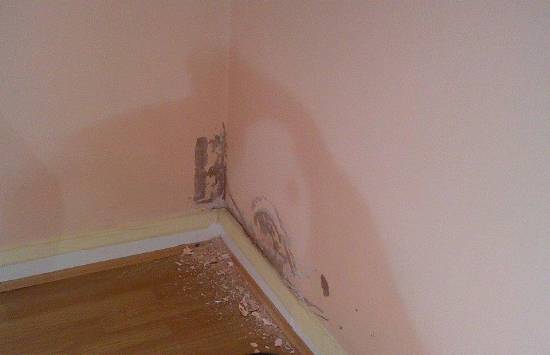
01 Apr How to cure Rising Damp
No problem is so wide spread nor so misunderstood as rising damp. Probably every building built before 1900 has a damp problem in some degree and thousands of dollars are spent in repairs.
In many cases the cure is worse than the disease; ill-conceived treatments may in fact increase the problem and could decrease the real estate value of the building.
On top of this many renovation practices can cause problems where they may not have existed previously.
Expensive and good looking renovations can turn into disaster areas by not allowing for moisture flow in old walls.
The symptoms of wall dampness are easily recognised: musty smell, deteriorating paint and plaster. The moisture behaves like a wick and in fact is called wick action, it literally rises up the wall, like kerosene rises in a wick on the kerosene lamp. There comes a point where the damp cannot rise any further due to natural ventilation causing it to dry out this area is called the tide mark and is quite visible, at that point the drying out process is the fastest and mineral salts are deposited as visible marks on the wall. This tide mark is usually at about 900mm above floor level.
The first step in rectification is to source the cause, the damp proof course which is usually made out of lead or galvanised iron or even bituminous material, which is imbeded between the brick coursing, in the hope of preventing the damp rising, may have deteriorated over the years. But more often the problem is elsewhere.
The most logical and essential consideration to the prevention of rising damp is keeping the ground on which the building is located as dry as possible. That is achieved by diverting any discharged water well away from the building and its foundations, it is also essential to check gutters, drains and down pipes for hidden leaks that may not always be obvious.
If the floor structure is timber then the underneath should be well ventilated using the natural cross ventilation system available, by means of vent grilles installed on the perimeter walls, at every 1.8 meters is desirable.
If it is a concrete raft slab construction, then the damp usually rises on the perimeter walls and is almost always due to bridging of cavities or the overflowing of eaves into cavity walls. Generally the concrete slab itself with the plastic membrane under neath is a good water proofer in itself thus negating any moisture conning up from under the slab.
If all these basic building rules have not been broken and the damp still persists (highly unlikely) then other more effective chemical means may have to be implemented. These include the chemical injection of silicone liquids under pressure this is usually done by competent trades specialising in this type of work. Another method that I have heard and read about is the “FREEZTEQ” damp course System that can be done by the handyman or women.
We want you the reader to write to us on any building matters, questions or if you seek advise, we will gladly answer any topic that you wish us to discuss.



